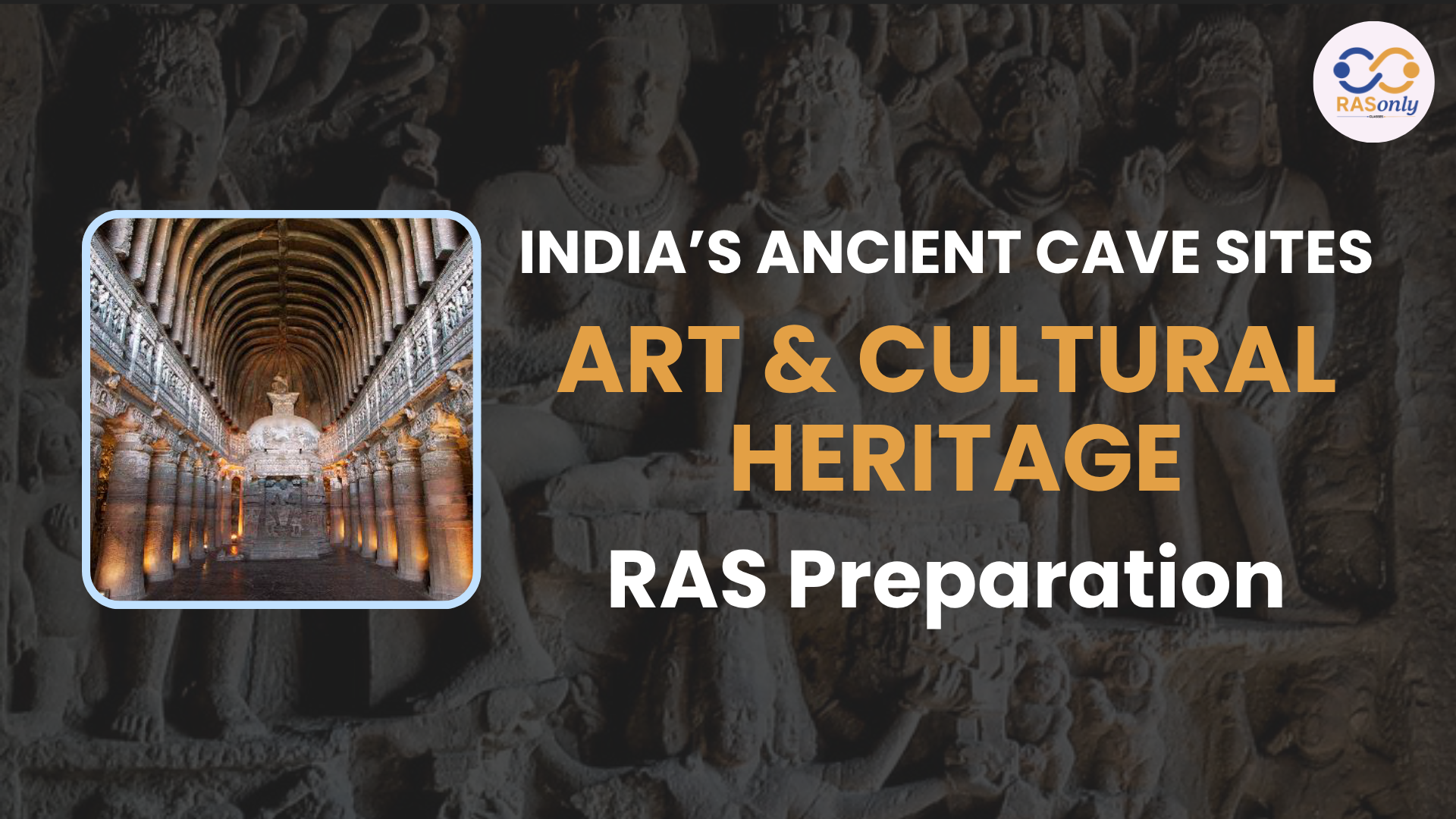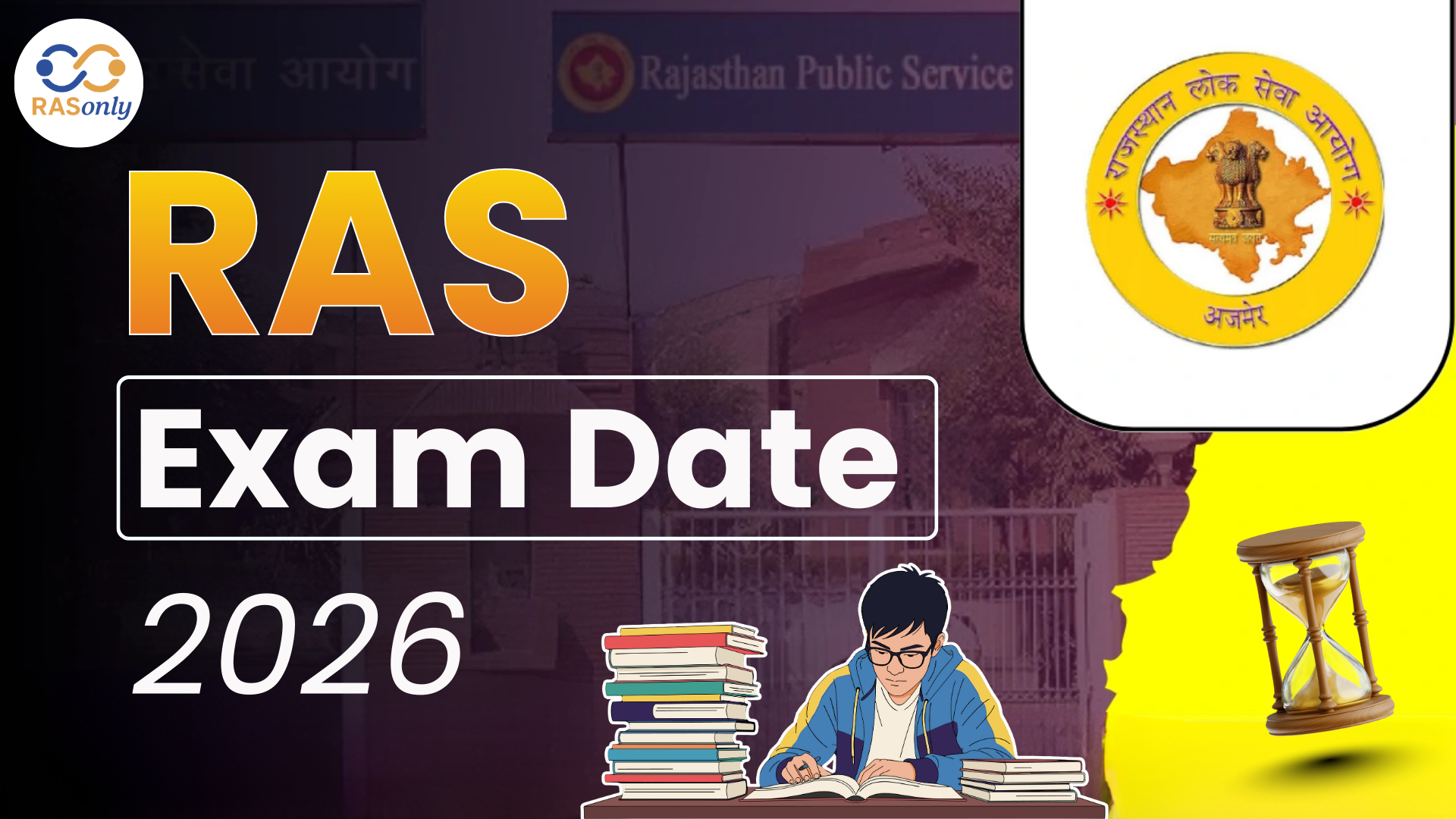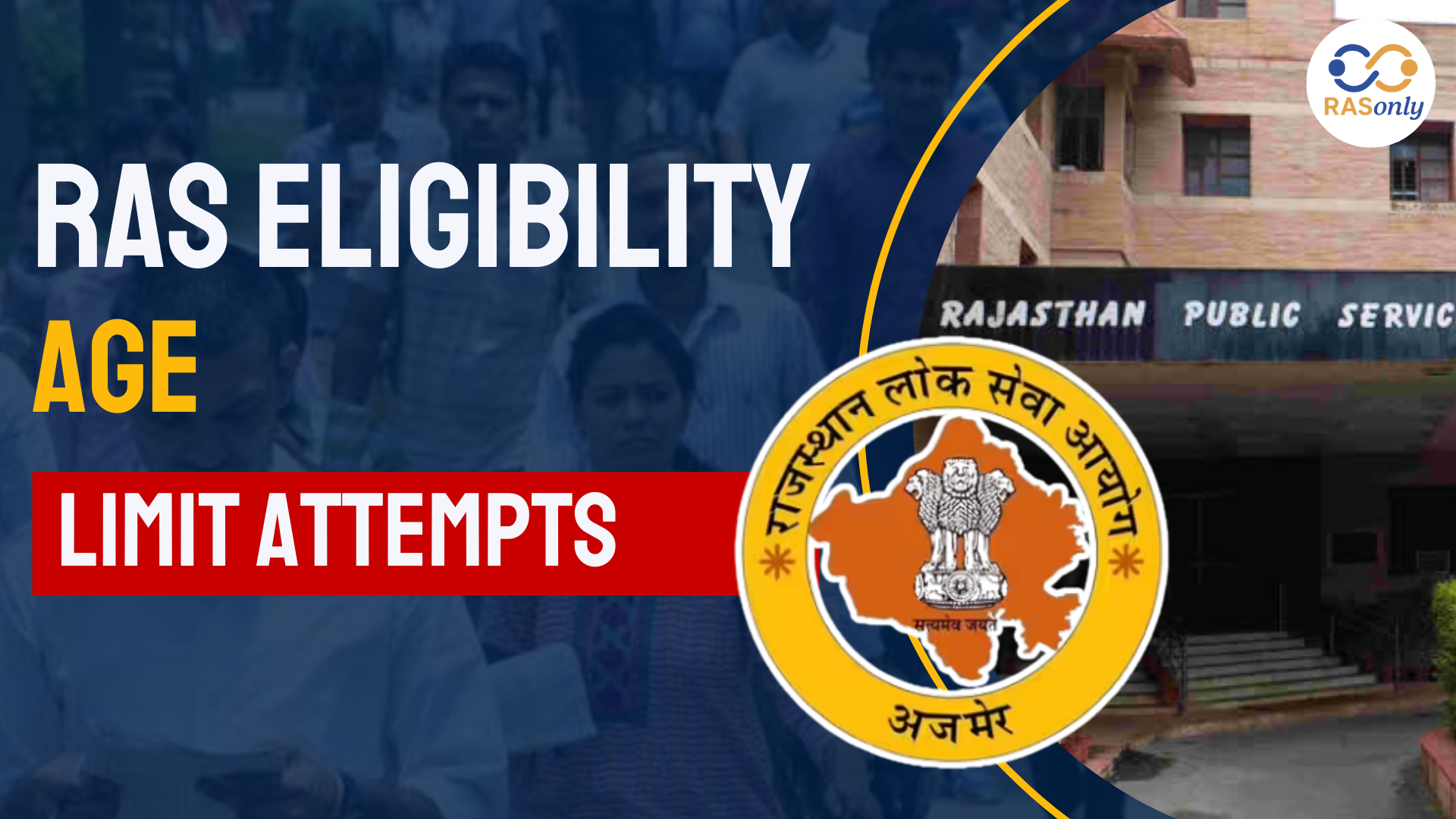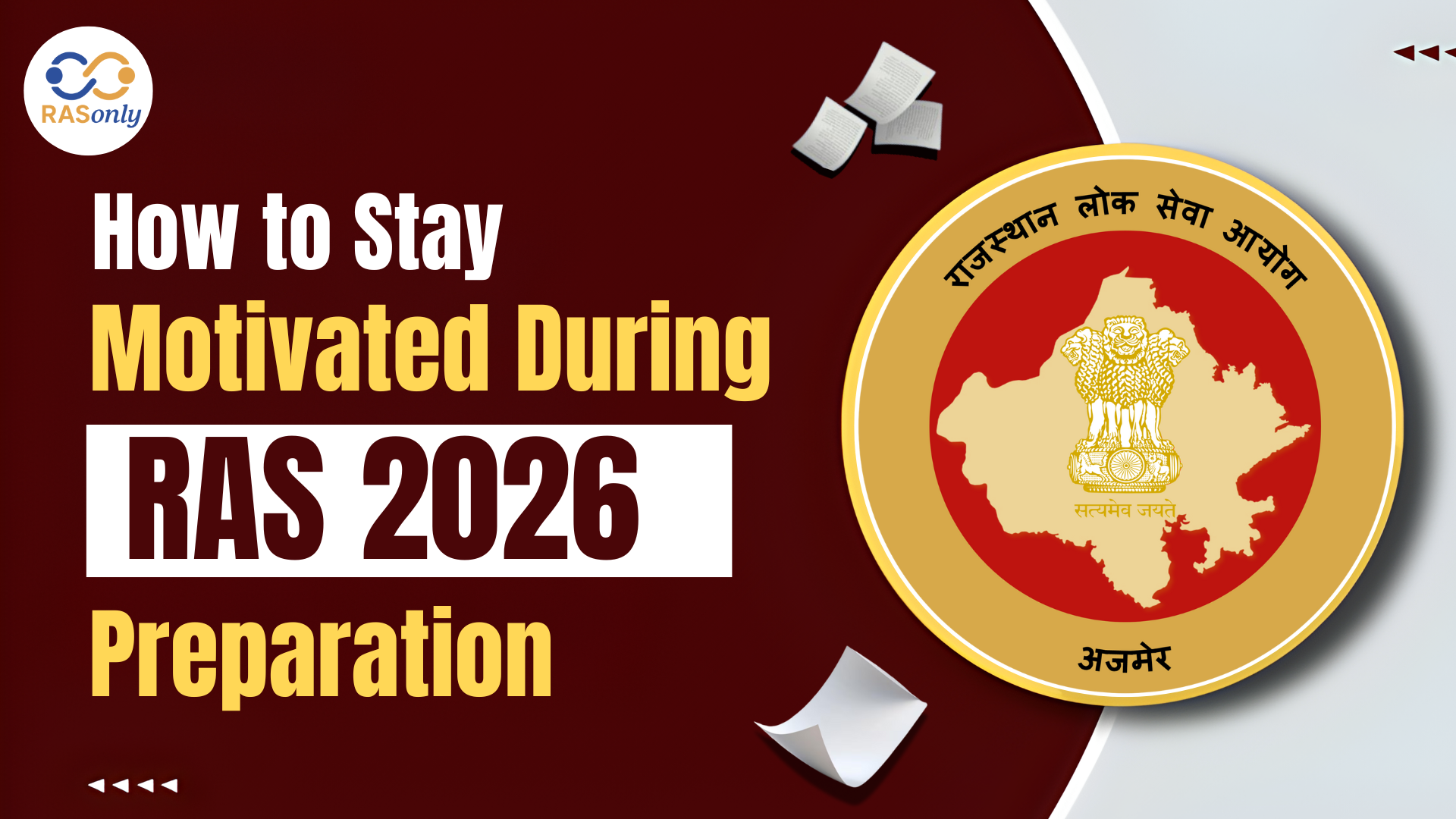RAS Exam Date 2026 for Notification, Prelims, Mains Date
- >
- RAS Preparation Resources
- >
- India’s Ancient Cave Sites: Art & Cultural Heritage | RAS Preparation
India’s Ancient Cave Sites: Art & Cultural Heritage | RAS Preparation


India’s Ancient Cave Sites are outstanding remnants of a very rich cultural, religious as well and architectural heritage of India. These monuments are incorporated into the hills and cliffs, and these carved monuments were used as monasteries, temples, and as protection to Buddhists, Hindus, and Jains on the whole. Ranging from the artistic brilliance of Ajanta and Ellora to prehistoric paintings of Bhimbetka, these caves are a reflection of the trends of spiritual and art forms evolving in India. Studying these cave dwellings is necessary for individuals who pursue the RAS, since it is immensely rich in both historical and cultural context. The guide focuses on the key cave sites in their entirety, their exceptional characteristics, and their use in competitiveness examinations such as RAS and UPSC.
What is Rock‑Cut Architecture? India’s Ancient Cave Sites
Rock-cut architecture is construction composed of solid natural rock, out of which particular structures were carved. Such monuments are carved out of mountains, cliffs, or hillsides, unlike buildings that are built using different materials. This method was popular in ancient India and was particularly employed with regard to religion, and religious buildings include temples, monasteries (viharas), and prayer halls (chaityas).
India’s Ancient Cave Sites structure remains the best example of such architecture with technical perfection and religious insight. The caves were not just places of shelter, but also the center of learning, worship, and art. Their accuracy in carvings that were done either without or using modern tools depicts the high levels of creativity of ancient craft phenomena.
Historical Timeline & Evolution: India’s Ancient Cave Sites
The rock-cut architecture of India was developed over the centuries, starting in the Mauryan period, and the Buddhist, Hindu, and Jain periods, and came to its peak in the perfection of the craftsmen and the art of religious statement. This development shows the time and shift of dynasties, religious movements, and inventions. A table with a comparison of the refined schedule is available here:
| Period & Era | Approx. Date / Dynasty | Representative Sites & Highlights |
|---|---|---|
| Maurya | 322–185 BCE | Barabar Caves (Sudama, Lomas Rishi): polished chambers, early chaitya‑arch echo features for Ajivika ascetics |
| Early Buddhist (Deccan) | 3rd century BCE–1st cent CE | Pitalkhora, Bhaja, Karla, Bedse: earliest chaitya halls and viharas |
| Satavahana–Gupta | 2nd century BCE–6th cent CE | Ajanta: 29 caves with Jataka frescoes; two main construction phases |
| Early Medieval (Deccan) | 5th–7th century CE | Badami: Chalukya rock-cut Hindu caves; Cave 3 dated to Saka 500 (578–579 CE) |
| Rashtrakuta–Kalachuri–Yadava | 6th–10th century CE | Ellora: Buddhist, Hindu, and Jain caves; Kailasa Temple monolith; complex religious syncretism |
| Medieval (Marathi region) | 5th–6th century CE | Elephanta Caves: Hindu Shaiva iconography, mid‑6th century CE, likely under Kalachuri patronage |
Major Cave Sites
The country of India is home to some of the most memorable caves, each of which can be described as a unique blend of history, religion, and architectural mastery. The following is an overview of the most significant India’s Ancient Cave Sites, including their dates, geographical settings, and main features, which are useful when revising or comparing them.
| Cave Site | Location | Period/Dynasty | Religion | Key Features |
|---|---|---|---|---|
| Barabar Caves | Bihar | 3rd century BCE (Maurya) | Ajivika, Buddhist | India’s oldest rock-cut caves, polished interiors; Lomas Rishi cave has a chaitya arch. |
| Ajanta Caves | Maharashtra | 2nd BCE – 6th CE | Buddhist | 29 caves, famed for Jataka frescoes, two construction phases, UNESCO World Heritage site. |
| Ellora Caves | Maharashtra | 6th – 10th century CE | Hindu, Buddhist, Jain | 34 caves; Kailasa Temple (Cave 16); religious harmony; monolithic architecture. |
| Bhaja & Karla Caves | Maharashtra | 2nd century BCE | Buddhist | Among the earliest chaitya halls, wooden beam imitation, and large prayer halls. |
| Kanheri Caves | Mumbai, Maharashtra | 1st BCE – 10th CE | Buddhist | 100+ caves; inscriptions, water cisterns, and educational centers for monks. |
| Elephanta Caves | Maharashtra (Island) | 6th century CE | Hindu (Shaivite) | Rock-cut sculptures of Lord Shiva, the Trimurti; UNESCO site. |
| Badami Caves | Karnataka | 6th – 7th century CE | Hindu, Jain, Buddhist | 4 caves; Chalukyan architecture; detailed carvings of Vishnu, Shiva, Mahavira. |
| Udayagiri & Khandagiri | Odisha | 2nd – 1st century BCE | Jain | Rock-cut shelters; inscriptions of King Kharavela, Jain iconography. |
| Bhimbetka Rock Shelters | Madhya Pradesh | Prehistoric (30,000 BCE+) | Tribal/Animistic | Over 700 caves with prehistoric art; Auditorium cave, a UNESCO heritage site. |
Significance for RAS & Competitive Exams
Ancient cave sites in India are highly significant to those who aspire to take RAS, UPSC, and state-level competitive examinations. These places are often asked questions about art and culture, ancient history, UNESCO heritage, and architecture, which makes them the necessary static GK categories. They also have a connection to current events in cases where discoveries, conservation activities, or updates concerning heritage statuses are proclaimed.
- Static GK Value: Frequently asked in Prelims (e.g., Ajanta murals, Kailasa Temple, Bhimbetka art).
- Art & Culture: Covers Buddhist, Hindu, and Jain contributions to rock-cut architecture.
- Current Affairs Link: UNESCO designations, ASI restoration news, or new archaeological discoveries.
- Map-Based Questions: Location-based MCQs often feature in RAS and UPSC Prelims.
- Interdisciplinary Relevance: Combines history, geography, environment, and heritage conservation.
Conclusion
The antique cave locations in India are classical reminders of the spiritual inner-being, artistic beauty, and architectural prowess. These caverns depict centuries of cultural change, as can be seen in the peaceful frescoes of Ajanta, to the monolithic wonders of Ellora. These sites hold the key to mastering history, art, and cultural issues for RAS aspirants. They cannot be ignored in case of serious exam preparation, considering their applicability in both the branches of the syllabus- static and dynamic syllabi. Revise them, map them, and relate them to what is being discussed most widely to remember the information best.
FAQs
Post Category
- RAS Salary
- Result
- RAS Admit Card
- RAS Job
- RAS Cutoff
- Preparation Tips
- RAS Answer Key
- RAS Exam Analysis
- RAS Syllabus
- RAS Previous Year Papers
- RPSC RAS Exam Pattern
- RAS Interview
- RAS Mains Exam Date
- RAS Vacancy
- RAS Test Series
- RAS Best Books
- RAS Preparation Resources
- RAS Coaching Centre
- History
- Polity
- Geography
- Economics
- Science
- Art and Culture
- RPSC RAS Application Form
- RPSC RAS Notification
RASonly Interview Guidance Program

Mr. Ashok Jain
Ex-Chief Secretary Govt of Rajasthan
- IAS officer of the 1981 batch, Rajasthan cadre.
- Passionate about mentoring the next generation of RAS officers with real-world insights.
- Got retired in Dec 2017 from the post of Chief Secretary of the state of Rajasthan.

Mr. Guru Charan Rai
Ex-ASP / SP in Jaisalmer
- Guru Charan Rai, IPS (Retd), retired as Inspector General of Police (Security), Rajasthan, Jaipur in 2017.
- Served as ASP and SP in Jaisalmer, Nagaur, Sri Ganganagar, Sawai Madhopur, Dausa, Sikar, and Karauli.
- He also held key positions as DIGP and IGP in the Law and Order division.

Mr. Rakesh Verma
Ex-IAS Officer, B.Tech, MBA, and M.A. (Economics)
- IAS officer of the 1981 batch and retired in Chief Secretary Rank.
- Civil servant of high repute and vast experience.
- Has been teaching UPSC CSE subjects for the last six years.
Related Post
👉🏻 Register Today to Join Classes! 👍🏻
- Team RASOnly -
🎯 Benefits of RASOnly Coaching:
- ✅ 1:1 Mentorship with RAS Officers
- ✅ Experienced and Expert Faculty
- ✅ Free Library Access
- ✅ Daily Minimum 4 Hours Must
- ✅ Comprehensive Study Material
- ✅ Regular Tests & Performance Analysis
- ✅ Personalized Guidance & Doubt Solving
- ✅ Online & Offline Class Options
- ✅ Affordable Fees with Quality Education
Key Highlights:
- 👉🏻 3-Day Refund Policy
- 👉🏻 New Batch Starting from 04 August
- 👉🏻 Registration Amount: Only ₹1000





